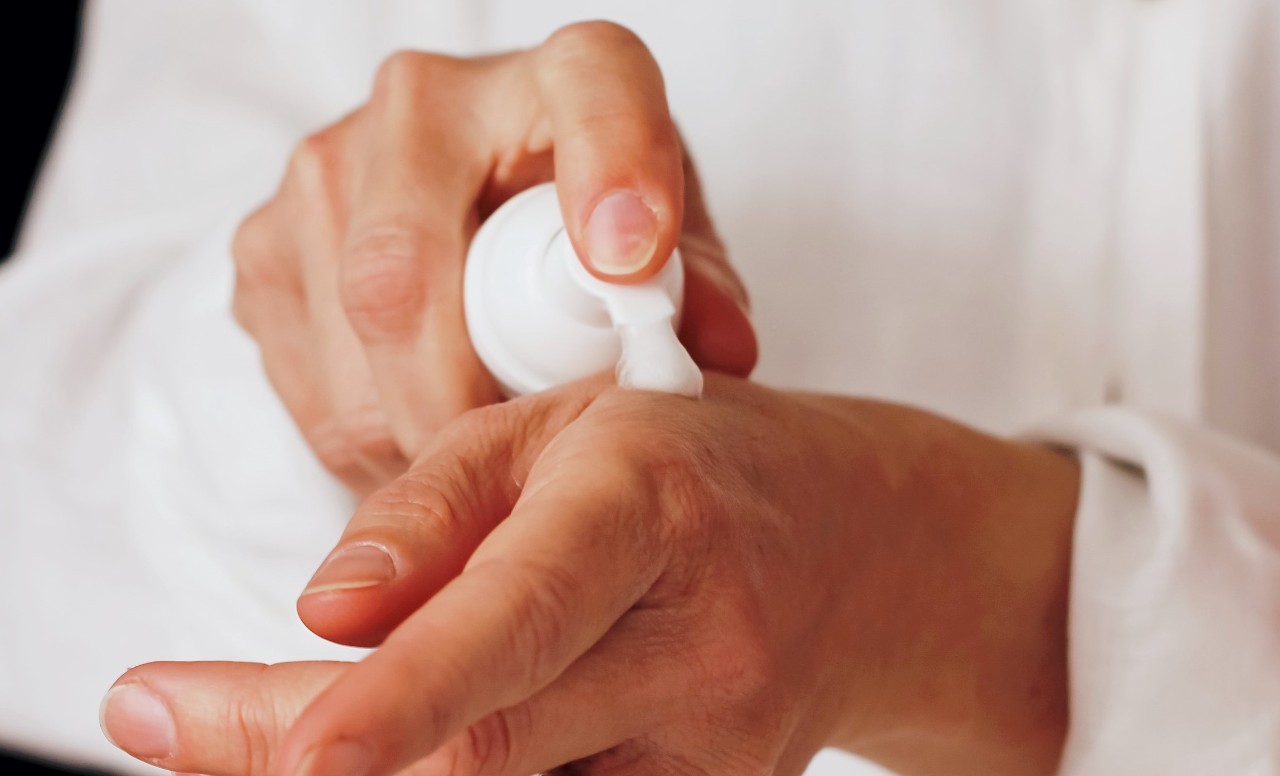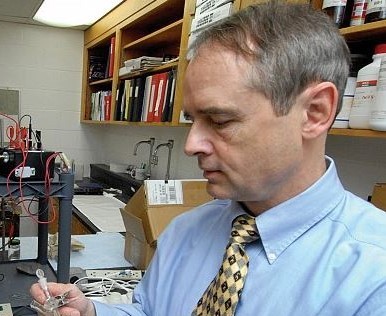
UC study: Does what goes on your skin get through?
NSF grant continues skin studies on skin at pharmacy college in partnership with P & G
A researcher at the University of Cincinnati is looking at ways to make products such as anti-aging and skin lightening creams, lotions and gels more effective.
“We are attacking problems that haven’t yet been solved in skin permeation,” says University of Cincinnati cosmetic scientist Gerald Kasting, the principal investigator on a National Science Foundation (NSF) grant that supports academic and industry partnerships.
Kasting, a professor in UC’s James L. Winkle College of Pharmacy, and co-investigator Johannes Nitsche at the University at Buffalo have been awarded a three-year, $409,000, NSF GOALI grant, in partnership with the Cincinnati cosmetics giant Procter & Gamble Company (P&G), to determine what happens when certain chemical agents are deposited on the skin.
The funds, Kasting says, come from the government, but a GOALI grant (or Grant Opportunities for Academic Liaison with Industry) is extra academic support for research that directly impacts industry. “This is to everyone’s advantage because it helps spur academic-industry partnerships.”

Professor Gerald Kasting is a cosmetic scientist with decades of experience researching skin permeation. Photo/Colleen Kelley/UC Creative + Brand
Skin permeation is a field of study in which Kasting and Nitsche have been engaged in for 20 years, with their prior predictive permeation models lauded as among the best in the field of pharmaceutical and cosmetic sciences. Their work spans the study of skin permeation across the board, from beneficial cosmetic products and topical medicines to pollution and hazardous chemical agents in the workplace.
This grant is the third in a series of federal grants that partnered UC’s Kasting with P&G and is focused on the skin permeation of chemical agents such as niacinamide, a form of vitamin B, which are used in topical cosmetic creams. The scientific methodology is being split between the two researchers, with UC conducting preclinical experiments on excised human skin and certain skin keratins. Keratins are one of a family of fibrous structural proteins that are the key material making up skin, hair and nails. Keratin also protects skin cells from damage or stress.
“We image the skin to determine what physical form the chemical agents are in and how that impacts the rate at which they permeate the skin,” Kasting says, adding that keratin binding studies are conducted to gauge the influence of skin proteins on permeation rates and their role in what is termed the “reservoir function” of the skin.
The University at Buffalo has responsibility for the computer modeling aspect of the study.
“Our work impacts how products like gels and sprays and rinse off products are formulated and bears on the duration of action of topical drugs including corticosteroids and retinoids. Through modeling we can predict how best to get the beneficial components into the skin and estimate the rates at which any hazardous components might also get in,” says Kasting.
Featured image at top: Melnchuck/Unsplash
Impact Lives Here
The University of Cincinnati is leading public urban universities into a new era of innovation and impact. Our faculty, staff and students are saving lives, changing outcomes and bending the future in our city's direction. Next Lives Here.
Related Stories
University launches UC Futures: Rural & Small-Town Scholars...
April 2, 2025
The University of Cincinnati has launched a new program to help introduce students in rural communities to the urban campus environment and support their next steps into higher education.
UC Honors students gain hands-on research experience
April 1, 2025
The Biomedical Research and Mentoring Program is open to any University Honors Program students. The faculty mentors are typically from UC’s College of Medicine or Cincinnati Children's Hospital.
UC doctor patenting first at-home endometriosis diagnostic test
March 31, 2025
March is endometriosis awareness month. Endometriosis is a condition that can be debilitating and is estimated to affect more than 6 million women in the U.S. Endometriosis occurs when tissue similar to the lining of the uterus grows outside of the uterus, causing pain, inflammation and potential infertility. The road to a diagnosis has been challenging for many women, but a University of Cincinnati researcher has developed a noninvasive diagnostic test that could make a difference.
